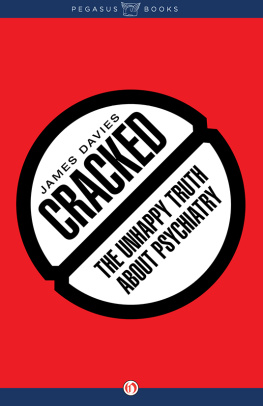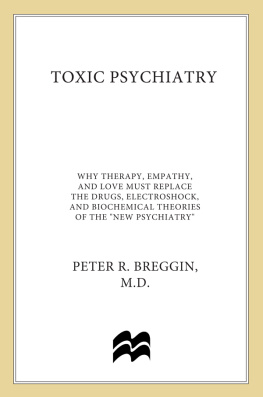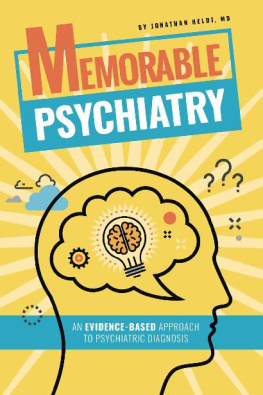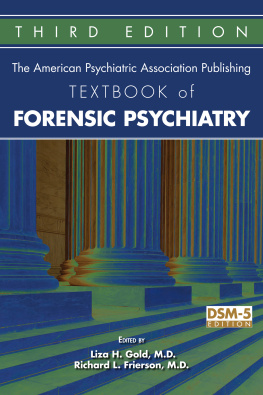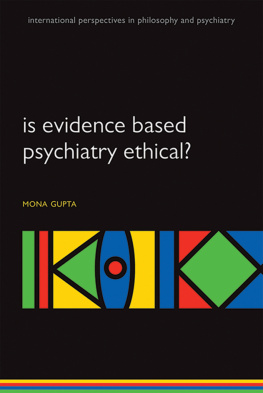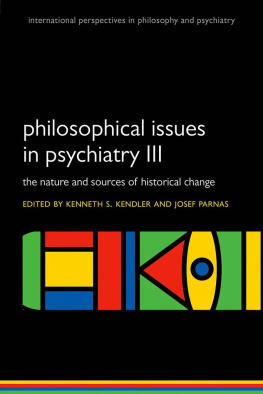All rights reserved, including without limitation the right to reproduce this ebook or any portion thereof in any form or by any means, whether electronic or mechanical, now known or hereinafter invented, without the express written permission of the publisher.
This edition published in 2013 by Open Road Integrated Media, Inc.
345 Hudson Street
New York, NY 10014
www.openroadmedia.com
PREFACE
T he figures are startling: At least one in four of you will suffer from a mental disorder in a given year. If you are one of those lucky ones with a constant spring in your step, well, the odds are very high that you are close to someone less fortunate than you. That is what the psychiatric industry tells uswe are a nation on the brink. And that is why it asserts that its services are more essential than ever before.
Psychiatry is a science, after all, and has the tools and knowledge at its disposal to help us when our lives break down. This is the official story we hear, the one gaining airtime in the media, the ear of government policymakers, and widespread dissemination through celebrity chat shows and popular magazines.
But what if the actual truth about psychiatry were not so sanguine or clear cut as we have all been led to believe? What if there is another more insidious story to be told, one that threatens all of our preconceptions? An alternative story certainly does exista deeper and far more maddening story. And in this book I intend to tell it.
Once upon a time, psychiatry was reserved for only the most distressed members of society. This was always a small minority: people who were often removed to asylums, usually against their will, and subjected to esoteric treatments. Today, the few have become the many. Not because psychiatric wards have increased in number, but because psychiatric treatments and beliefs about mental distress have now crashed through the walls of the hospital and surged into every corner of contemporary life, affecting how increasing numbers of us currently understand and manage our emotional lives.
In case you are doubtful, just consider the facts. According to the National Institute of Mental Health, in 2011 alone a staggering 254 million prescriptions of antidepressants were dispensed to the American public. The vast majority of these pills were not prescribed to the stereotypically mad characters depicted in Hollywood movies. No, most of their recipients were just like you and me, average people simply trying to make their way. Perhaps you are one of them. Perhaps someone you love is one of them.
Today, psychiatrys power and influence is far from abating; it is growing at a remarkable rate. And in this book I will show you why this is, paradoxically, a very bad thing for our mental health. To substantiate this claim, my method will be simple. I will investigate three medical mysteries: Why has psychiatry become the fastest-growing medical specialism when it still has the poorest curative success? Why are psychiatric drugs now more widely prescribed than almost any other medical drugs in history, despite their dubious efficacy? And why does psychiatry, without solid scientific justification, keep expanding the number of mental disorders it believes to existfrom 106 in 1952, to 374 today? What is going on?
To answer these mysteries, I will leave no aspect of the industry unexamined. Each chapter will focus on a different part of the story: how the process of creating new diagnostic categories regularly strays from scientifically accepted standards; how antidepressants actually work no better than placebo (sugar) pills for most people; how negative drug trials are routinely buried and research is regularly manipulated to convey positive results; how numerous doctors have been seduced by huge pharmaceutical rewards into creating more disorders and prescribing more pills; and how mass-marketing has been unscrupulously employed to conceal from doctors, patients, and the wider public the ethical, scientific, and treatment flaws of a profession now in serious crisis.
I have written this book to seduce a new generation away from the escalating craze for psychiatric drugs and diagnoses. I reveal through governmental, academic, and interview sources that the unhappy truth about psychiatry can be explained by one startling fact: in recent decades, many areas of psychiatry have become so lured by power and money that they are in danger of putting the pursuit of pharmaceutical riches and medical status above their patients wellbeing. My aim is not to shock anyone gratuitously, but just to report what the inconvenient facts suggest: that psychiatry, in the name of helping others, is now in serious peril of better helping itself.
During my journey researching and writing this book, I have amassed a vast number of air miles crisscrossing the Atlantic, interviewing some of the leading lights of the psychiatric world. I have consulted the people who have put the profession on the map: the heads of the premier psychiatry schools, the creators of new diagnostic categories, the presidents of national psychiatric associations; basically, the people with long and usually glowing entries on Wikipediathe real movers and shakers of the profession. My aim has not been to incriminate anyone personally, but merely to get at the truth. And as my eyes have gradually been opened by discoveries more worrying than I could have ever anticipated, I have checked and double-checked what I have heard to ensure Ive got the story correct. Now that my investigations are complete, its time to make what I have discovered more freely available.
As you follow me in the coming pages on the journey I took, you wont always find the ride comfortable, as you will encounter facts and confessions that will shock, baffle, and dismay you. But there is no point sugarcoating the facts. For if things are ever to be put right, then what is required above all are people, just like you, understanding and spreading the word that a profession purporting to help us is now seriously disconcerting and in both senses of the term Cracked .
CRACKED
CHAPTER ONE
PSYCHIATRYS EARLY BREAKDOWN AND THE RISE OF THE DSM
O n a chilly Wednesday morning in late January, I pass through the gates of my university after a fraught drive through Londons rush hour traffic. With two minutes left on the clock, I make my way hurriedly to the ground floor of the lecture theater. Today I am expected to deliver my first lecture on critical psychiatry.
As I enter the room it feels more close and cramped than usual, as nearly every student on the course has decided to attend (which, I must add, doesnt always happen on cold January mornings). The students are busily preoccupied as I approach the lectern and start quietly ordering my notes. Many of the students are chatting intently, some are tapping on laptops or mobiles, while a few eager souls (in the front row, of course) quietly sit waiting for me to begin.

